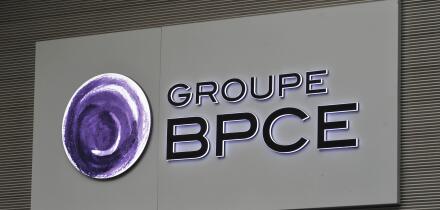The cerebral securitization market, not known for emotional speeches about saving the world, has in the past four years been swept by the wave of consciousness of environmental, social and governance issues across capital markets.
ESG must be practised differently in the world of asset-backed securities, which at first delayed adoption. But there are arguments to suggest that, once certain difficulties are overcome, securitization is peculiarly well suited to responsible investing.
Two of the big complaints of ESG investors are: “I want to know where my money’s going” and “I want to know exactly how good the issuer is”.
Securitization’s answer to both desires is: “You want securitization, then.”
Pauline Quirin, an ABS portfolio manager at TwentyFour Asset Management in London, puts both points succinctly. “ABS goes well with ESG criteria, because you’re exposed to a portfolio of mortgages, for example, not the balance sheet of the issuer — it’s a bankruptcy-remote vehicle,” she says. “As we finance mortgages, homes for people to live in, and not companies in sin sectors, it’s a relatively easy asset class from an ESG point of view.”
Where the investor’s money goes, in other words, is crystal clear. So is what the money does when it gets there. “You can assess all the ESG risk in that portfolio of loans,” Quirin adds, “because of all the transparency of data through the loan tape.”
That would be true in an ideal world — market participants are quick to point out that real life still falls short of that.
Wide and narrow
As in wider fixed income, ESG in securitization has two main currents.
Some investors think of it as a lens through which they examine the virtues and sins of all their investments. For others, ESG means specific deals the sponsor labels particularly green or social.
Oddly, while “Europe is leaps and bounds ahead in ESG integration,” says Katie Prideaux, sustainable investment analytics lead at the London Stock Exchange Group, the US has far more labelled deals.
Shaun Baddeley, managing director of securitization at the Association for Financial Markets in Europe (pictured), points to a report by the European Banking Authority last year, which found that in Europe “sustainable securitization is not more than 2% of all sustainable finance, whereas in Asia it is 10%-15% and in the US, including agency mortgage securitizations, over 50%.”

In his view, Europe is missing a trick. “The potential for securitization to support the transition to a greener economy is substantial. The question is, how does one unlock that?”
The short answer, in his view, is to free securitization as a whole from the regulatory chains that have bound it since the 2008 financial crisis. A ray of hope comes from a consultation the European Commission is having with the supervisory agencies until October, on whether the capital treatment of securitization could be eased, to tempt insurance companies and banks to return as investors.
In the meantime, promoters of labelled securitization have progressed on important issues of definition.
“It’s been debated within EU regulation what does a green securitization look like, and people have different views on it,” says Baddeley.
The natural assumption and starting point is that a green securitization is one backed by green assets. But that soon chafed — Baddeley calls it “a manifest error”.
“That would never allow securitization to fulfil its own objective in supporting green transition, because there are so few green assets,” he says.
New route to green
Starting with Kensington Mortgage Co, the UK non-conforming lender, issuers have advanced the idea that a securitization of non-green assets can be green if the issuer commits to using the proceeds to originate new green assets.
In principle, this is the same as the look-forward period that many unsecured green bond issuers permit themselves, to allocate proceeds to green projects within, say, two years of the deal.
The difference is that in securitization, there is a very real and meaningful connection between the investor’s money and the assets securitized. Compared with that, the purely notional connection between the investor and the green bond eligible assets looks a little flimsy.
To ease investors’ qualms that, in a green car loan ABS, for example, they might actually be investing in loans to customers buying petrol cars, market practice has evolved, Baddeley says, to “give full transparency of what is in the underlying securitized portfolio, its principal adverse impacts, line by line what assets are in there and how green they are, so investors can make that decision”.
The Green and Social Bond Principles organisation made both rationales for green securitization official in its June update of the Principles.
The European Banking Authority has taken an interest, with an eye on how to craft its advice to the EC on the forthcoming EU Green Bond Standard.
“The EBA view is that we need to recognise that while securitizations of green collateral is the ultimate standard we would like, there needs to be a transition till originators have enough green assets,” Baddeley says.
What the market still has to work out is “how long is that transition and what does it look like. Transitioning for different products and originator types is going to look different.”
It may take much longer for the mortgage market to gather enough green assets than the car loan market.
Quirin says she agrees that the forward-looking use of proceeds methodology is valid. “We believe in that green label, because we think it does finance the transition. It’s a good initiative to incentivise lenders to do more on that. When we have green collateral we won’t need that methodology, but we are a number of years behind that, when you think that only around 15% of total mortgage lending in the UK is on properties with EPC labels A or B.”
However, TwentyFour does not believe in the social labels attached to some deals. “Deals have been called social just because they target low income and underserved borrowers — we don’t think they are doing anything different from what they did before.”
A new way of looking
When mainstream bond investors began to consider ESG, they could turn to a wealth of ratings and analytics already developed for equity investors by companies such as MSCI and Sustainalytics.
But these providers only cover some ABS originators, many of which are private companies. They do not address their securitization deals at all.
When TwentyFour began to get intense about ESG in securitization in 2018, it had to develop its own model from scratch.
First, it obtains information on the originators themselves, using questionnaires. Then a second matrix covers each deal’s collateral.
“We always had a lot of data on a loan by loan basis — affordability measures, interest rates, loan-to-value ratios. These are all factors we assess from a social perspective, because we want to make sure we are looking at responsible lending, that mortgage lenders are not charging super-high interest rates that borrowers can’t afford, and that customers can pay the reversionary margins after their fixed rate periods,” says Quirin. “You can assess that relatively easily from the loan tapes.”
There is still scope for originators to improve the data they provide on these issues, but TwentyFour has enough to be able to score each originator and deal, giving higher weight to the deal, for each of E, S and G. Governance is important: whether the sponsor’s interests and risks are aligned with those of noteholders.
All the firm’s portfolio managers and analysts are trained in how to evaluate deals — the expertise is not confined to a specialist team. This means ESG analysis is fully integrated into the credit analysis.
All deals scoring less than 34 out of 100 for governance are excluded. Ordinary portfolios also exclude deals scoring less than 25 for E and S combined, while in sustainable portfolios deals must score at least a 34 average across the board.
About 5% of the ABS universe is excluded in this way, but the scores are not just used for exclusion — PMs are likely to put in bigger orders for deals with higher ESG scores. For this reason, TwentyFour’s sustainable funds tend to under-allocate to car finance ABS, which have weak environment scores.
Despite securitization’s advantages for ESG investors, as a fundamentally transparent product, the information available is still far from perfect. “The main challenge is lack of data disclosure and standardisation,” says Quirin.
Even though sponsors are well used to divulging precise information on each loan or lease in a portfolio, the databases used were not originally designed for ESG purposes. Some sponsors gather more information than others, some disclose more than others — and each discloses in its own way, which may differ from the next sponsor.

Some data, such as Energy Performance Certificates for buildings, may simply not exist yet.
“The next step is carbon data,” says Quirin (pictured). “Last year we and other investors have been engaging with issuers to obtain EPCs on each property, and now it’s great to see that this is becoming market standard and on loan tapes this field is being added. Coverage is not 100%, but it's moving in the right direction.”
Spotting themes in spreadsheets
ABS investors trying to grapple with ESG may have more help in future. What is believed to be the first third party analytics service was launched in April by the London Stock Exchange Group’s data and analytics arm.
The system is an extension of the LSEG’s Yieldbook analytics platform, whose bread and butter is modelling securitization prepayments and defaults. Two years ago the LSEG started to develop Yieldbook’s ESG Framework for Securitized Assets.
“You can do a huge amount with the data you already have,” says Prideaux at the LSEG. “In other asset classes you are running around for data and only getting it annually. In securitization, you get it monthly.”
The idea was to select new indicators of ESG characteristics which could be derived from crunching all these existing figures.
For example, the numbers reveal rates of ‘loan churn’. Prideaux calls this “the understood practice of pressuring recent borrowers into refinancing [a loan] again and again. Although sometimes it may be in the best interests of the borrowers, often it’s not when you see it happening a lot.”
The Yieldbook analysis is different for each kind of ABS, so apples are compared with apples. But even within one market segment, the data can reveal how originators and servicers vary in how they handle customers.
The system produces this kind of thematic indicator, rather than scoring deals for E, S and G. The LSEG believes this is more transparent, flexible and useful to investors, which have their own ways of structuring indicators into overall assessments of deals.
But Prideaux insists that a product of this kind for securitization “has to be quantitative and collateral-based, that’s absolutely critical. You need to be looking at every loan in every deal to give an ESG score, because it is those underlying loans which drive performance.”
In a market as data-heavy as this, she rules out human analysts making judgements on deals. “Because modelling is so important in securitization, you need to have an output number that you stick in your prepayment and default models,” she adds.
The LSEG wants to keep improving the product, adding new themes such as affordability, physical climate risk and transition risk.
Hunting for the payoff
While ABS investors are still building their ESG laboratories and obtaining the feedstocks of data they need, they are looking ahead to what they can do with the knowledge when it arrives.
Two uses are top of mind. The “golden question”, says Prideaux (pictured), is finding a link between ESG and credit performance.

In mortgages, for example, Quirin says: “the rational thing would be that if a borrower has a green property from legacy housing stock, that probably means he has put a lot of work to improve it so it’s better maintained, and he will care more about paying the mortgage. And if it has to be repossessed, it will likely be in a better state than a lower efficiency-rated property.”
However, research into the issue by the Bank of England had found, she says, “some positive correlation” between greenness and lower arrears and delinquencies, “but the conclusion was you don’t see material improvement in performance for green mortgages”.
TwentyFour has not detected any correlation in its own portfolios either, though that may be because there have been so few delinquencies in general in recent years.
The LSEG is doing some analysis that will be ready by the end of the year. “To really make these [analytics] meaningful in a financial world you need to show whether they have a financial impact,” says Prideaux. “Our hypothesis is that they do.” The LSEG has seen some impact on short term prepayment speeds in US agency MBS.
Asked whether European investors think ESG improves their performance, Prideaux says she does not know, but that they see it as a risk management tool.
In general, it is too early to tell what this kind of detailed ESG analysis of ABS will reveal. But it might actually prove socially useful. If studies can show that being more patient or generous to borrowers in difficulty improves overall collections on a portfolio, lenders are likely to adopt those practices. They are already incentivised to do so, but the keen attention brought by ESG consciousness might reveal patterns they had missed.
Equally, if investors can tell how socially responsible an originator is, those with better practices may achieve tighter spreads, prompting others to emulate.
Getting tough
The second way to use ESG insight is a step Quirin is eager to move on to — engagement.
“We are still lagging the corporate bond market,” she says. “We have a data collection process, but until we have more reliable data as ABS investors we are less able to push for specific changes.”
Energy performance certificates are a classic example. It costs money to obtain one, so property owners will only do it if they have to, or receive some incentive.
ABS investors are nagging sponsors to get more of their loans covered by EPCs. But the real aspiration will come afterwards, when investors “go back to them and say ‘that’s great, but you need to make some improvements’,” Quirin says. “For a pool of mortgages what we would like to see is an improvement of the energy efficiency of the properties. That has to come from the lenders incentivising borrowers to make some adjustment.”







